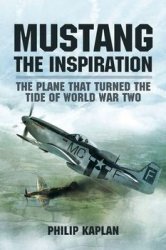The morning of 5 June 1967 found Israel’s armed forces facing the massed Arab armies around her frontiers. Israel’s citizen army had been quietly and efficiently mobilized over several weeks to defend the country against the impending Arab attack which every Arab medium of mass communication announced was imminent. At 07.45 hours on Monday 5 June, and for the ensuing three hours, the Israeli Air Force commanded by Major-General Mordechai Hod, undertook a pre-emptive attack designed to destroy the Egyptian Air Force and its airfields. Flying in low, under the Arab radar screens, Israeli aircraft destroyed the Egyptian Air Force. Later it was to deal with the air forces of Jordan and Syria and to destroy aircraft of the Iraqi Air Force, mostly on the ground. The actual hour of the attack was chosen on the assumption (a correct one as it later turned
Out) that it would find most Egyptian Air Force Command personnel in their cars en route after breakfast from their homes to their bases. In the main attack, nineteen Egyptian air bases in the Sinai, in the Nile delta, the Nile valley and Cairo area were attacked in some 500 sorties, destroying 309 out of 340 serviceable combat aircraft including all 30 long-range Tu-16 bombers, 27 medium-range Iliyushin 11-28 bombers, 12 Sukhoi Su-7

Israeli Air Strikes, 5-10 June 1967
Fighter bombers, some 90 MiG-21 fighters, 20 MiG-19 fighters, 25 MiG-17 fighters, and a further 32 transport aircraft and helicopters.
That morning, unaware of the scope of the catastrophe that had befallen the Egyptian Air Force, and believing the optimistic reports of victories emanating from Cairo, the Jordanian, Syrian and Iraqi Air Forces commenced hostile operations. Syrian bombers attacked the oil refineries in Haifa Bay and an airfield at Megiddo; the Jordanians attempted to strafe a small airfield near Kfar Sirkin; and the town of Natanya on the Mediterranean coast was attacked by Iraqi aircraft. The Israeli Air Force thereupon directed its attention to these Air Forces. By the evening of that day, the Jordanian Air Force had been wiped out, with 22 Hunter fighters, 6 transports and 2 helicopters destroyed; the Syrian Air Force had lost 32 MiG-21, 23 MiG-15 and MiG-17 fighters, and 2 Iliyushin 11-28 bombers, constituting two-thirds of its total strength; while numbers of aircraft were destroyed in an attack on an Iraqi Air Force base at H3. By nightfall on the second day of the war, 416 Arab aircraft had been destroyed, 393 of which were destroyed on the ground; 26 Israeli aircraft had been lost in action. Of the total number of Arab aircraft lost in the war, 58 were downed in aerial dog-fights.
This brilliant operation accorded Israel complete superiority in the air. Thereafter, the Israeli Air Force was free to devote itself to providing close combat support for the advancing ground formations during the remaining days of fighting on the various fronts. Unlike his two predecessors in command of the Air Force (Major-General Dan Tolkowsky and Major-General Ezer Weizman), General Hod was not a product of the Royal Air Force. He had served in the Palmach, and joined the Palmach air unit, which was a nucleus for the future Israeli Air Force. He was sent, as were many others of his class, to train in a special course at an airfield in Czechoslovakia on the eve of the War of Independence and in the early stages of that war, when the Czechs were supplying arms and actively aiding Israel by making available facilities in order to train the embryonic air force. General Hod, a native of Kibbutz Degania, was a graduate of the first class that had trained to fly in Czechoslovakia, the supplier of the first Messerschmitt aircraft to Israel, which played such an important part in the War of Independence. He subsequently trained in the 1950s at a Royal Air Force flying school in Britain, where he emerged as the outstanding pilot of his class. He rose through the ranks of the Air Force, attending courses abroad and, some months before the outbreak of the Six Day War, replaced Major-General Weizman, who moved over to the General Staff as No. 2 in the capacity of Chief of the Operations Branch. General Hod proved to be a dynamic and forceful commander of the Air Force. In his very outspoken manner, which came to expression in a staccato type of speech, he imposed his views (as did indeed his predecessor) frequently on the General Staff, ensuring a marked preference from a budgetary and other points of view, for the Air Force. He was innovative and daring, and these traits of character came to very clear expression in the daring and very brilliant plan evolved for the opening of the Six Day War.




 World History
World History









